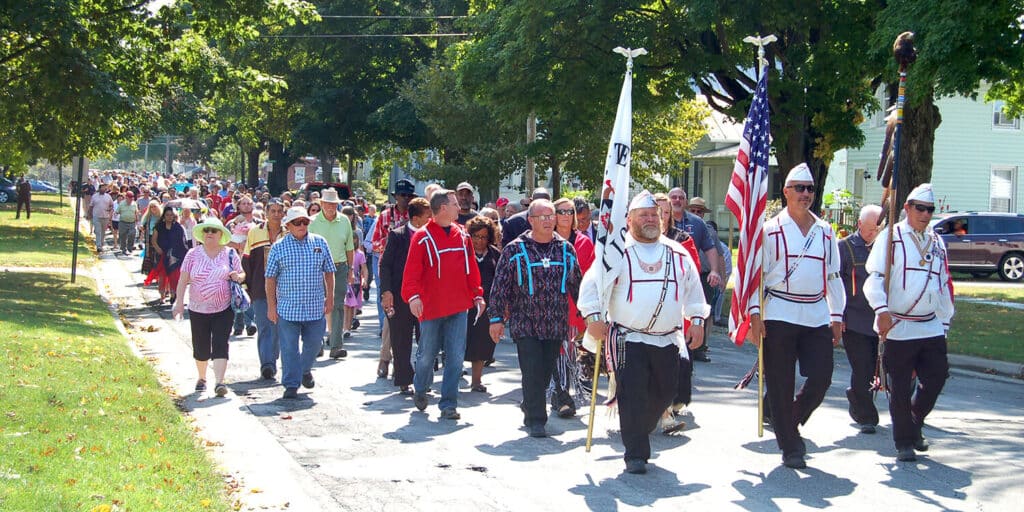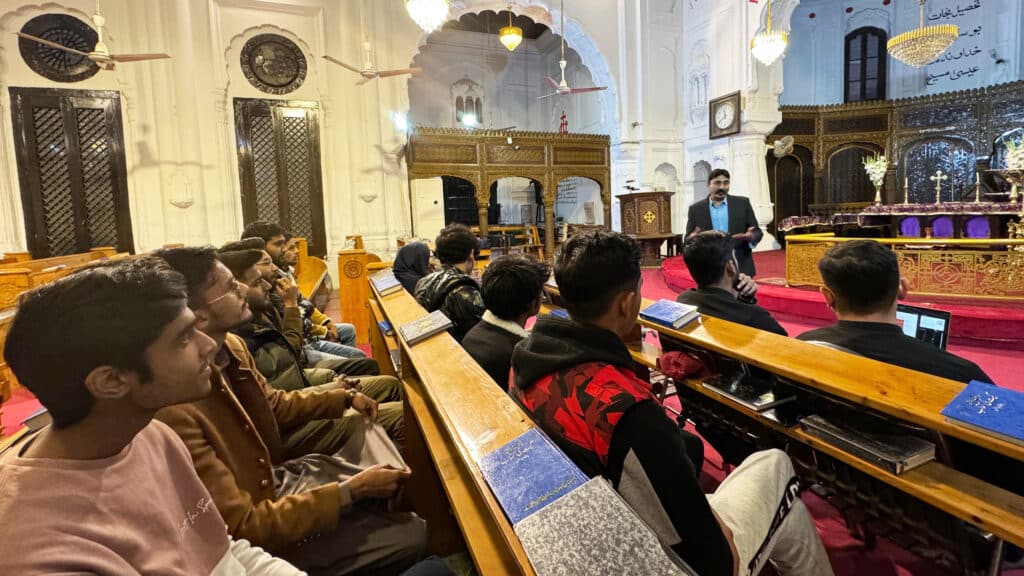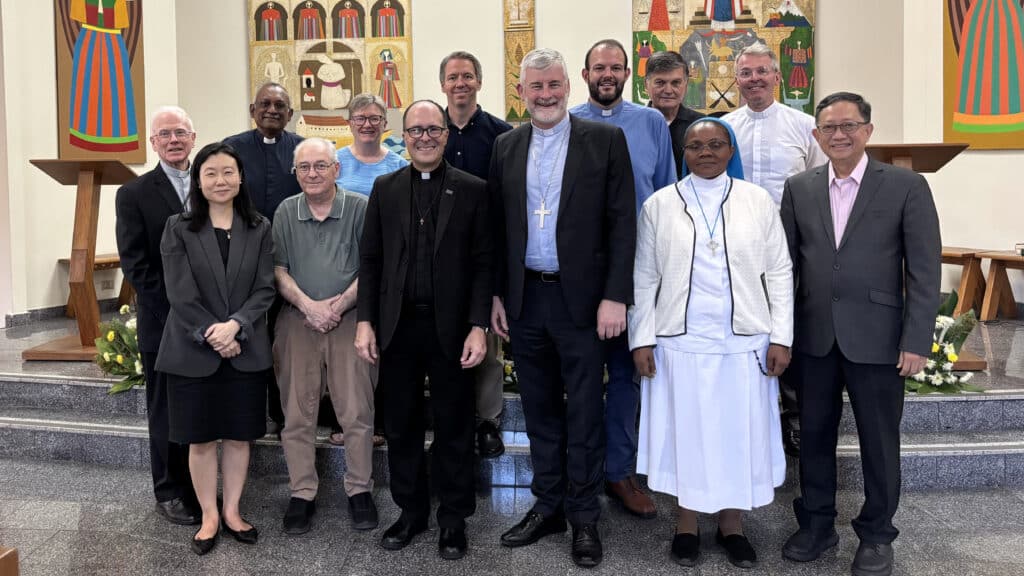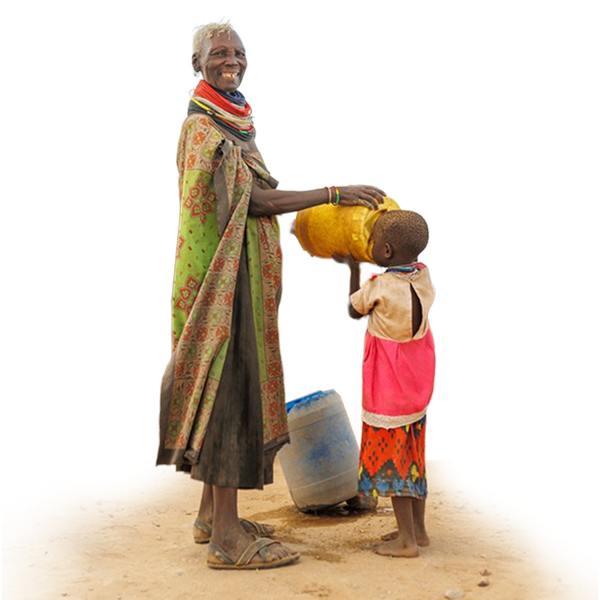By Christie R. House
September 25, 2019 | ATLANTA
The welcome offered in the first moments of the Wyandotte land transfer ceremony on Sept. 21, 2019, at John Stewart United Methodist Church in Upper Sandusky, Ohio, began with joyful tears as hundreds of people filled the sanctuary and spilled out into the streets. Betsy Bowdon, the co-chair of the church’s Records and History Committee, astonished and gratified to see so many Wyandotte families in the crowd, recovered quickly and delivered her welcome.
“This is a good day to be a Wyandotte and a good day to be a Methodist. On this day, the land you entrusted to the Methodists will be returned to the Wyandotte Nation of Oklahoma.”
In 1843, just before the U.S. government forced the Wyandotte people to relocate, first to Kansas and later to Oklahoma, tribal leaders deeded about two acres of their Ohio homeland to the Methodist Episcopal Church. The church has held on to that land and preserved its sacred history and burial grounds for 176 years.
Visitors from across Ohio, Wyandotte representatives of Kansas, Oklahoma, and Michigan, Native Americans from other nations, descendants of historical figures John Stewart and Harry Kinley, bishops and other leaders of The United Methodist Church, public officials and hundreds of residents from the local community arrived throughout the morning to commemorate the day. Chief Billy Friend, of the Wyandotte Nation of Oklahoma, noted that this was probably the largest gathering of Wyandotte people in Upper Sandusky since they left in 1843.
Even the rain that started as the ceremony in the church got underway couldn’t dampen the high spirits of the day. The Rev. Chebon Kernell, executive director of the United Methodist Native American Comprehensive Plan, said that, like the people, the Earth was crying tears of joy. As participants poured out of the church for a procession to the second site, a small burial ground, and then to the mission church and its cemetery further down the street, the sun came out and graced the rest of the proceedings.
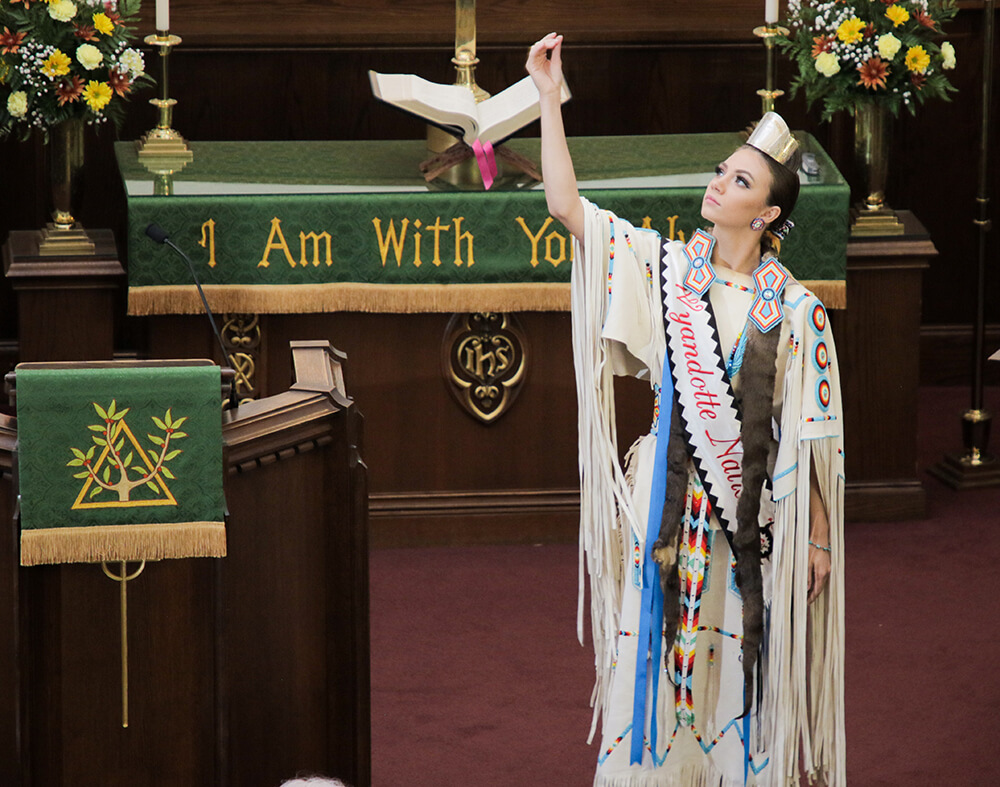
PHOTO: ANTHONY TRUEHEART
God finds a way
The Wyandotte-Methodist history goes back to 1816, when a troubled man heard God’s call to head Northwest to share the story of Jesus. Walking in that direction, he encountered members of the Wyandotte Nation and found his purpose. (Spelled Wyandotte by the descendants in Oklahoma and Wyandot among descendants in Kansas and the current residents of Wyandot counties in Ohio and Kansas.)
The truly remarkable story of this encounter in the land named “Ohi Yo,” or “Good River” in the Seneca language, could only have been directed by God. John Stewart, though freeborn, was a poor man of mixed race who lacked formal education. He suffered loss, sickness and deep loneliness – yet he was the messenger God chose. He earned the trust of the Native Americans and shared his faith. At the same time, he won over skeptical Methodist leaders who eventually embraced his initiative. His mission inspired them to create a national missionary-sending agency that would one day span the globe.
Stewart forged a bond between the Wyandotte and the Methodists that has weathered the storms of more than two centuries. Today, that bond shows signs of growing even stronger.
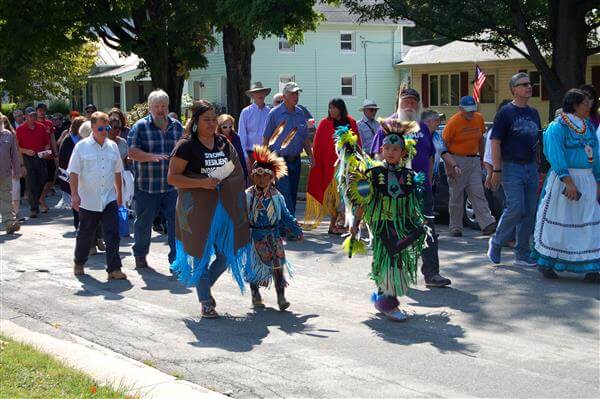
PHOTO: CHRISTIE HOUSE
Coming full circle in God’s time
Pastor Betsy Bowen, who has just entered ministry as a licensed local pastor, and Jean Moon, her co-chair on the history committee, follow in the footsteps of their Methodist forebears, retelling the stories of their shared history with the Wyandotte people. While Bowen admitted that the Wyandotte land had not always been maintained as it is today (the church had fallen into ruin in the 1880s), she said that throughout the years, certain Methodists took a keen interest in preserving the history and sites entrusted to the congregation.
In 1889, the small Wyandotte mission church was completely rebuilt under the direction of N.B.C. Love. In the 1950s, Harry Kinley reignited interest in the history, and in 1967, Thelma Marsh worked with the local school board to introduce a six-week course on the Upper Sandusky Methodist-Wyandotte history to children in the schools.
In this way, generations of Upper Sandusky children, including Bowen, Ohio State Senator Riordan McClain, and Upper Sandusky’s mayor, Mark Washburn, learned about the history and toured the mission church with their classes. On this historic day, they came to show their support, looking for a way to satisfy a deep longing to acknowledge the pain and injustice of forced relocation and reaffirm the good relationships of this community with its original Indigenous neighbors. “Giving back the land is a way to complete the circle,” Bowen affirmed.
Over the past decade, Friend and members of the Records and History Committee re-established an active relationship. Wyandotte people of all ages visit the Upper Sandusky sites to learn about their ancestors and rediscover their history.
Two United Methodist agencies, Global Ministries and the Commission on Archives and History, provided guidance and support for the land transfer through their general secretaries, Thomas Kemper and Fred Day, and the talents of other staff as needed. The staff and congregation of John Stewart UMC have just entered a new relationship with five other area United Methodist churches to form the Upper River Ministries, under the leadership of newly appointed pastors, the Rev. Johnny Phillips Jr., the Rev. Douglas Pummell, and Pastor Betsy Bowen. The Rev. Brian Arnold, former pastor of the church, was also part of the ceremony.
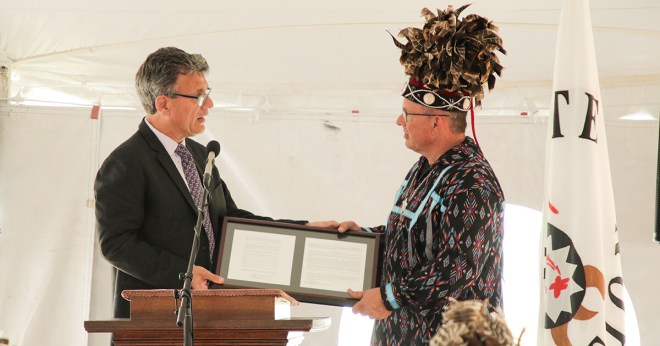
PHOTO: ANTHONY TRUEHEART
Transfer of title
In an outdoor ceremony held on the grounds of the mission church, the gathering reassembled. “As Indian people, everything that we get we usually have to fight for, especially when it comes to land,” Friend explained. “But this was not the case. They said, ‘chief, we think it’s time for this land to come back to your people.’”
“On this land,” Friend declared, “the next seven generations of Wyandotte will continue. We are back to preserve the future of our past.”
Thomas Kemper, as a representative of the current UMC missionary agency, officially returned the deed to Chief Friend on behalf of The United Methodist Church. He started by acknowledging that John Stewart, the Methodist missionary, was buried just a few feet away alongside leaders of the Wyandotte people.
“Now from this Holy Ground arises renewed friendship between the Wyandotte and the people called Methodist, to walk together into a future of shared experience, respect and growing friendship,” Kemper stated. “From this ground, sanctified by death, grows hope and new life, in a common struggle to live out God’s love, and justice in this world.”
Friend, as the leader of the only Wyandotte tribe officially recognized by the U.S. government, accepted on behalf of his nation and acknowledged other Wyandotte communities in all parts of North America. In addition, he presented John Stewart UMC with a gift of $10,000 from his nation as a contribution toward the care of the property.
Principle Chief Janeth English of the Kansas Wyandot Nation and Grand Chief Ted Roll, of the Wyandotte of Anderdon Nation in Michigan, represented their communities as honored guests and contributors to the ceremonies.
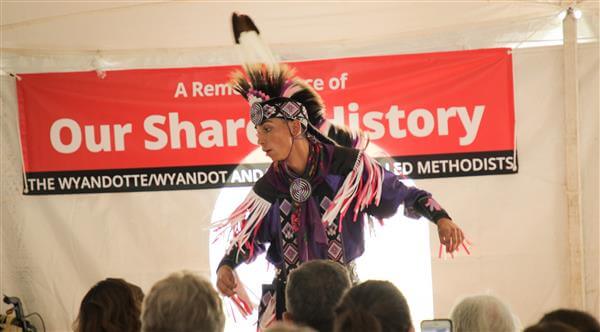
PHOTO: ANTHONY TRUEHEART
Acts of Repentance heal and transform relationships
Episcopal leaders attending the event included Bishop Gregory V. Palmer of West Ohio and Bishop Tracy S. Malone of East Ohio conferences, Wisconsin Area Bishop Hee-Soo Jung, president of Global Ministries and Greater New Jersey Bishop Jeremiah Park, president of the Commission on Archives and History. Bishop Palmer noted: “This occasion, which gathers decades and centuries of history, some tragic, and some triumphant, brings us all together at a unique intersection. This is a day of celebration, a day of sober reflection, a day of continued repentance and a day of singular grace.”
From his vantage point working with Native American United Methodist communities across the United States, Kernell described a growing trend of improved relations, acknowledgements of injustice, and a hunger for reconciliation between United Methodist and Native American communities.
In 2012, the Council of Bishops of The United Methodist Church initiated a journey toward healing relationships with Indigenous people, which included an Act of Repentance service at General Conference. United Methodists on every level of the denomination continue this journey, seeking to build relationships of mutuality and find tangible ways to express meaningful repentance that creates a space for healing and understanding.
In a conversation on the side, Friend and Kemper exemplified how, by God’s grace, this complex process – filled with sadness and joy, repentance and forgiveness – can solidify into deeper relationships, informed by the past, yet determined to pivot, at this point in history, to mutually create a new space in which Methodist and Native American communities serve God together, respecting one another’s traditions.
“We will forever be indebted and will forever be grateful to The United Methodist Church and to Global Ministries for this day today, and it will always be remembered as a day in our history,” Friend said.
Kemper answered, “I am so grateful for this moment of repentance and your openness to accept this gift – and to also make this promise – that we will continue, together, to create that common future.”
Christie R. House is the senior writer/editor, Global Ministries.
